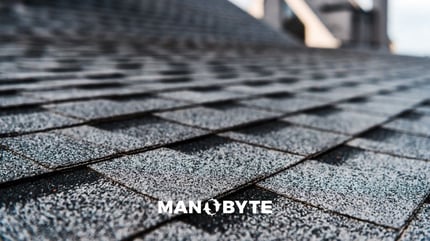
The Scoop
As the construction industry continues its movement along the path of increased sustainability, the options that this mode of operation affords both builders and homeowners will only increase. For example, sustainable and forward-looking features enhance value and provide greater profit options for clients. This trend will continue to rise as new ways of implementing green construction grow throughout 2021. In fact, next year alone, it is anticipated that the green construction industry will reach $1 trillion dollars in value.
Alternatives to traditional roofing materials, specifically shingles, arose from this shift in thinking but also as a result of the dangers associated with the use of asbestos, which was a major additive used in shingle production beginning in the 1900s. Many attempts were made to mimic the durability, fire resistance, and low cost of asphalt shingles, using other materials, but these manufacturers fell short as their products didn’t hold up over time.
However, some manufacturers hit the metaphorical nail on the head and developed products with successful composite formulations. Some did their job so well that their products earned approval for use in historical preservation projects and achieved high ratings for fire retardancy and impact resistance. It’s even been argued that some of these products actually improve upon the real thing with better performance and overall quality and as a result are warrantied for 50 years!
Composite shingles are by design more durable, versatile, and eco-friendly than asphalt shingles. Asphalt shingles are composed of a paper or fiberglass mat with an asphalt layer above. Composite shingles and shakes are comprised of upscale, quality material such as plastic in various forms like HDPE (high-density polyethylene) and different polymer blends, that would be rated in “better and best” categories. Therefore there aren’t any basic options for composite shingles as exists with asphalt shingles.
Terminology is of utmost importance when reviewing composite roofing options. There are obvious differences between composite shingles and shakes and composition shingles, so don’t be misled. Composition shingles are technically asphalt shingles that consist of multiple layers that are coated with asphalt and adhered together. It’s worth noting that composition shingles appear in search engine results alongside composite shingles quite frequently.
What’s the Cost?
You may be asking yourself, are there any reasons to steer clear of composite shingles? Quite honestly, composite shingles are a great alternative to asphalt shingles as the quality and performance of top brands are unmatched, and so are their warranties (as mentioned previously). However, the cost may not fit every budget since composite shake or slate-like roofs can cost $400 to $1,600 per square for the material alone. This is approximately four times the cost of asphalt shingles, but more affordable than slate and wood.
Other factors to consider that affect cost:
- The complexity of the roof: the greater the pitch or slope the more your labor costs will be.
- Existing roof: Does it need to be removed? Composite shingles can easily be placed over a single layer of shingles that are in good to fair condition.
- Geographical location: This can directly affect the price since the U.S. Cost of Living Map reveals that the cost of living can vary by as much as 35% or more based upon where you reside within the U.S.
A Few Parting Thoughts
Were you aware that most composite shingles and shakes are made of post-consumer plastics that would otherwise be littering landfills at this very moment? Definitely worth giving some thought to when considering which product better suits your needs, or that of your client.
It’s also great to have pertinent and relevant information at your disposal to further assist with your decision-making. For example, case studies, comparative analyses, and reviews are wonderful resources. Where composite roofing is concerned, there are top players within the manufacturing industry whose products stand out above the rest for their emphasis on sustainability and the overall quality of their products. Here are a few to help get you started:
- EcoStar’s products consist of approximately 25% to 80% recycled materials
- Brava utilizes 100% post-consumer recycled material during its manufacturing processes.
- Enviroshake produces shingles that are composed of 95% recycled material.
- Ply Gem shingles and shakes contain over 90% recycled material.
Many popular brands are designed using solar-reflective “CoolRoof” qualities that meet EnergyStar and/or LEED standards. Some of the manufacturers listed above and others offer multiple lines with various features as well as provide transferable warranties on their products. There are a plethora of options available, and most certainly, an agreeable and aesthetically pleasing choice that will compliment your upcoming project.
Ready to Dive In?
Work with our team of Business Process experts and watch us take manual clunky systems, tech stacks, and processes and turn them into tailored, intelligent workflows that deliver business outcomes.


